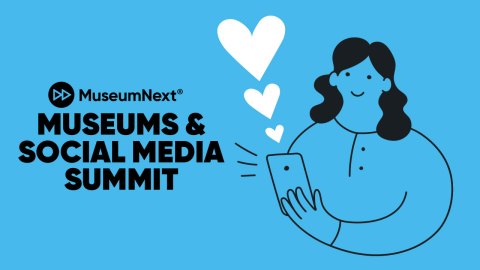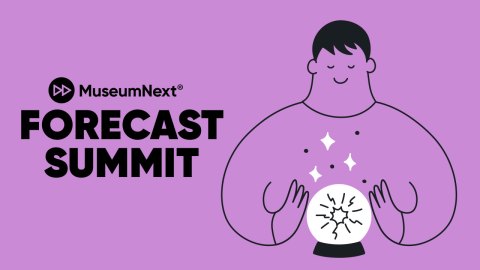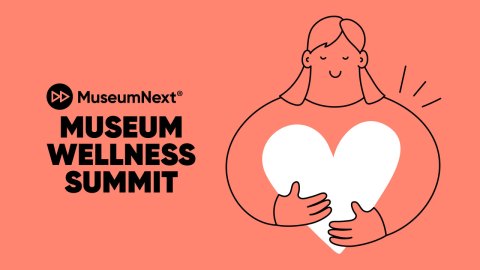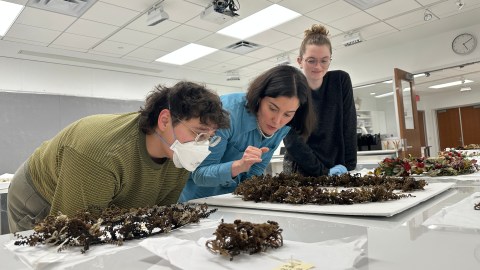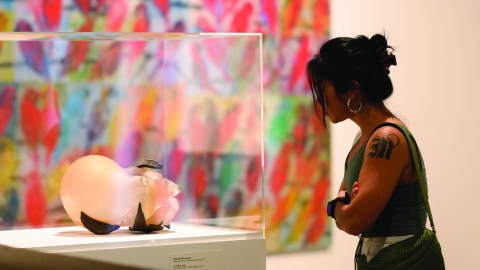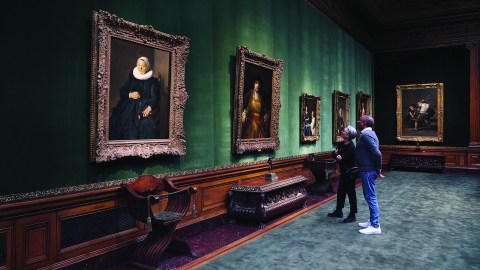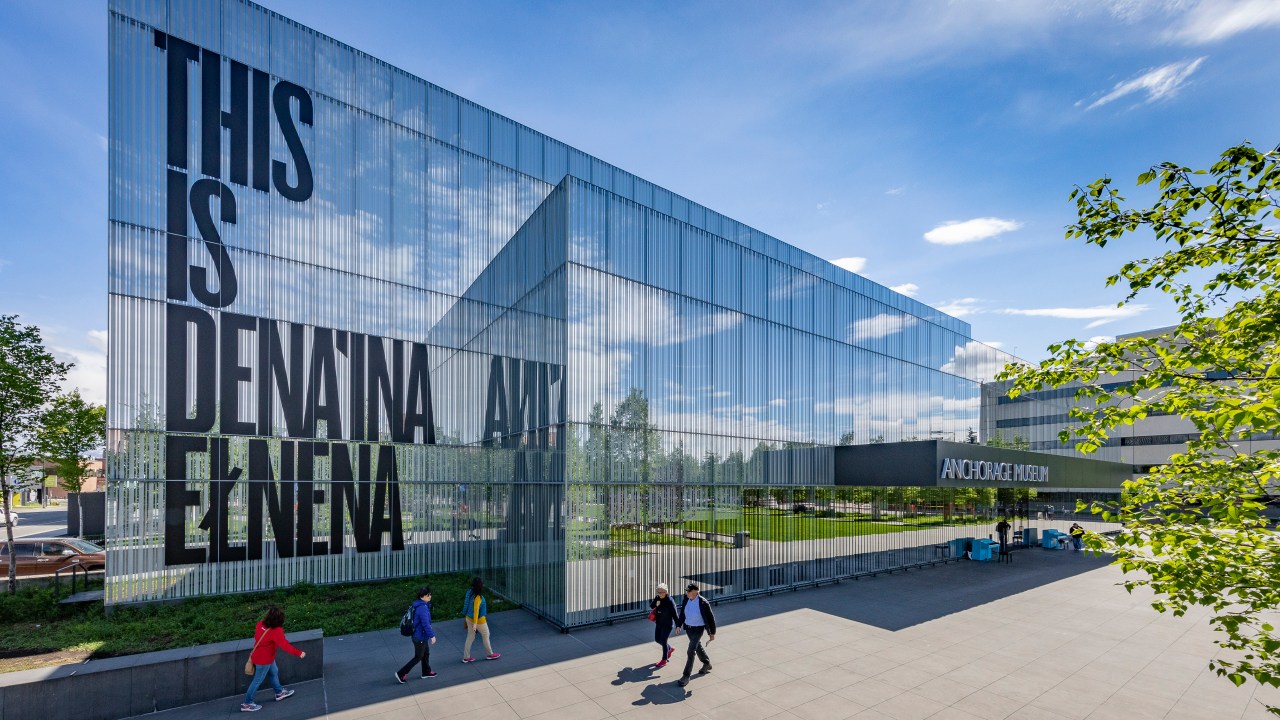
I’m a huge fan of museum podcasts, with about a dozen in my current feed. Recently, I was honored to appear on one of my favorites—Chatter Marks from the Anchorage Museum—chatting with museum thinker Sandro Debono and journalist Cody Liska for a series devoted to museums and climate change. I invited Sandro to contribute today’s guest post telling us more about the series and what he has learned from the guests he has interviewed for this arc.
—Elizabeth Merritt, VP Strategic Foresight and Founding Director, Center for the Future of Museums
The Anchorage Museum’s award-winning Chatter Marks podcast series spotlights Alaska-rooted creatives, community voices, and global thinkers. Over the past months, it has also reached out to museum leadership and established professionals from across the globe to discover, connect and listen to museums that are in a climate of change. Two five-episode series have gone live over the past months, bringing museum leaders and thinkers from around the world into dialogue about the challenges and opportunities of our time. Season one aired between August and October 2023. Season two, beginning in summer 2025, is released weekly.
Glacial ‘chatter marks’ are scars carved into bedrock by retreating glaciers. These are marks of movement, resilience and transformation which also stand as a powerful metaphor for the conversations themselves. Indeed, these podcast series are nothing short of impressions left behind by human-led institutions adapting to change, both internal and external, happening across the global cultural ecosystem. Each episode is followed by a written reflection, published on the museum’s website, which expands the ideas raised during the podcast to create a living archive of practice, attitudes and initiatives.
Co-hosted by Alaska-born journalist Cody Liska and me, the series has featured a curated list of guests with surprisingly diverse backgrounds, albeit comfortably sharing common goals and objectives. From creative practice to herding, from musicology to engineering, the ten guests we have engaged with so far suggest a type of museum leadership with professional trajectories that challenge the assumption that museum leaders emerge exclusively from museum studies or curatorial backgrounds. Instead, leadership often comes from unexpected intersections between science and storytelling, where community agency meets institutional frameworks and technology encounters tradition.
The conversations were intentionally unscripted and none of the questions we asked were shared in advance, allowing dialogue to unfold organically. This spontaneity often led to insights we could not have anticipated, and reinforced the idea that museums are laboratories of ideas as much as they are stewards of collections. Guests often unknowingly connect like puzzle pieces, yielding unexpected insights and, more importantly, inspiring ideas put into practice.
Three takeaways for museum practice
Across the ten episodes, I would pick three transversal themes, particularly relevant for museums navigating the 21st century: hope in a better future, new ways of engaging with communities, and futures thinking as a discipline that is slowly aligning with museology and museum practice.
Hope surfaced repeatedly, not merely as passive optimism but as an authentic aspiration. Stefan Brandt at Berlin’s Futurium, for instance, speaks about mapping and documenting hope, the kind of hope that is less personal and more community-oriented, referencing society and democracy. In more general terms, hope and a positive outlook to what lies ahead was spelled out by most of the interviewees in season one.
Another clear takeaway was the growing centrality of communities, publics and persons in museum practice. Institutions are moving beyond their walls, whether through the journalistic approach promoted by our very own Julie Decker at the Anchorage Museum or the “culture hacking” strategies described by Anne Sofie Norn at UN Live – the Museum of the United Nations, to create what is described as a borderless museum. Some institutions have even developed clear performance metrics to measure impact and relevance. Miranda Messie at The Climate Museum in New York, for example, speaks about success metrics as fostering a climate activism. Museums are shifting from sites of passive learning to engines of engagement and action.
Finally, futures thinking was threaded through most of the conversations in various ways and means. Lath Carlson, formerly at the Museum of the Future in Dubai and Kristin Alford at The Museum of Discovery – MOD in Adelaide (Australia), together with Stefan Brandt at Futurium in Berlin, took us through their choice and use of futures-oriented methodologies. Beyond these more futures-focused institutions, futures thinking might exist, but not be particularly sedimented. Engagement with futures thinking isn’t always formalized, but the mindset shows up in constant questioning about what is probable, possible, or preferable. Michael Ratke at The Ubuntu Lab Project is also futures-oriented in his search for how to shape and define new museum spaces with clear learning outcomes. Whether grounded in the tools of the discipline, particularly strategic foresight, or in direct experience informed by the day to day hands-on, our podcast guests expressed an intuitive grasp of futures literacy, showing how this mindset might become second nature for institutions that aspire to stay agile.
What we learnt about climate change action
This choice of trends, amongst others, is the backdrop to climate change action, which is what we had initially sought to map out with these podcasts. What emerged was a broader “climate of change” that encompassed social, cultural, and institutional transformation. Anne May Olii at the Sámi RiddoDuottarMuseat in Karasjok (Norway) underscores the complexities of climate action, describing it as a balancing act rather than a straightforward path. Lizzy Bakker, formerly at NEMO – The Science Museum in Amsterdam, shares her personal experience of embracing new knowledge learned from exhibition-making around energy consumption. Indeed, climate action in museums is not a one-size-fits-all approach. Instead, it reflects institutional contexts, community needs, and local realities. The common denominator, however, is a recognition that museums are implicated in these issues whether they choose to act or not.
Agile museum futures
If there is a single conclusion to draw from these conversations, it is that the future of museums lies in agility. The most inspiring institutions we encountered are not bound by rigid definitions of what a museum should be. Instead, they are fluid and surprisingly able to adjust, adapt and experiment. It is also about embracing the scars, the chatter marks, that come from navigating change.
Most importantly, it reminds us that museums are places of possibility. They are capable of fostering hope, centering communities, and helping societies think about the future. The voices gathered in this series remind us that we also have the tools to do so in hand, and that the 21st-century museum idea is resilient enough to the scars that come with hope in better futures.
And our conversation with Elizabeth Merritt was that momentous chat that could frame both seasons in context.
You can listen to the series on Amazon, Apple Podcasts, Spotify, Player FM, Podbean and all other podcast platforms. The critical reflections for season one are available on the Anchorage Museum website.
